Our understanding of nature did not arise suddenly. It needed: systematic analysis of working of nature, making a hypothesis and, testing them through focused experiments and observations. All this took time, technology, and resources. The story of science is full of ideas that were attractive but it turned out that Nature did not work that way. In many cases, it is observations and measurements that made us realise something (especially in the case of very small and very large) only after we observed it.
Evaluating various claims
Any claim of knowledge of scientific knowledge in ancient times must be judged by checking whether:
-
Was the culture evolved enough to ask these questions?
-
Did they have the experimental and technical skills as well as mathematical tools to ask and get answers for such questions?
-
Did they have the technology to scientifically test its validity? Idle speculations are not science.
In India, the earliest science textbook is Vaisheshika (2nd Century BC) and the mathematical astronomy started in 500 AD and peaked in 13th Century AD.
Understanding a culture
Archaeological data can give the technological sophistication of a culture. Intellectual growth is in the form of myths, religion, literature, astronomy, mathematics, art, etc. Myths and their association to the Heavens connect literature and astronomy.
Early Myths and Astronomy
From early times humans have imagined Earth to be the mother. She has to be seeded by father sky through rains. This interlocking relation is at the root of original myths of all the cultures. The drama of thunderbolt, storms, moon, Sun, eclipses, rainbows and meteors all add to this fascination. The sky connects visual patterns from daily experience to constellations. People then give the stars names of familiar things and star patterns, an association with their Myths.
Myths, cosmos, and astronomy
Myths and Astronomy are closely associated and their interrelation is a fascinating subject. So many of the stories of patterns imagined by joining dots in the skies come from myths, and experiences of the culture.
The evolution of Astronomy is complex and exciting enough to give new insights into our prehistoric and historic past.
Who studies astronomy?
Astronomy is both a utilitarian science and fascinating subject:
-
Artists who imagine and portray our experiences with the wonders of the skies
-
Farmers who use it to decide the seasons for sowing seeds
-
Travellers who use it to find directions
-
Calendar makers who use it to make decide the time period within a year
-
Priests who use it to define auspicious time for ceremonies
-
Astronomers who are just mesmerised by the sky.
Basic Astronomical Concepts
There are only a handful of concepts that are relevant to astronomy. These are:
1. Year and seasons
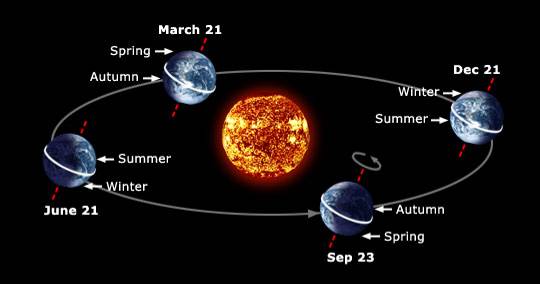
2. Points of sunrise and sunset

3. Moon and Phases of the moon

4. Movement of the Sun with respect to background stars
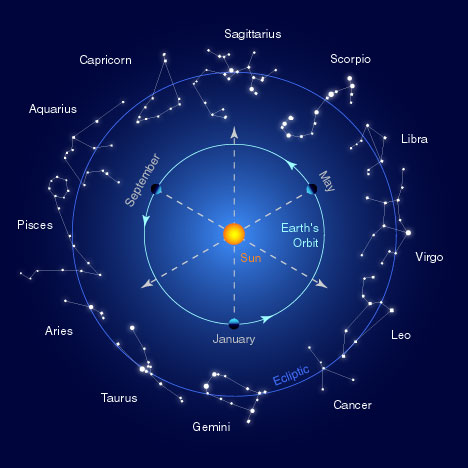
5. Eclipses
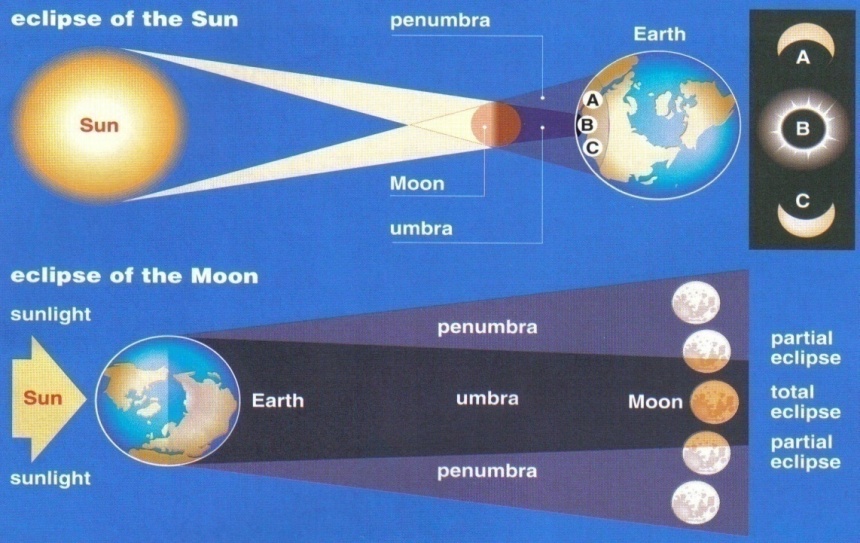
6. Wanderers: planets, comets and shooting stars in the night sky

7. Precession of the axis of rotation of the earth
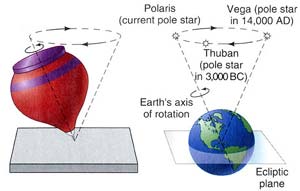
This is easily noticeable on the constellation at which the Equinox and Solstice sunrise occurs.

Studying astronomy
The easiest way of keeping track of the sky is to put a stich in the ground and look at its shadow:

This will give you the time of the day as well as the month of a year in a single observation.
Astronomy Provides Many Clocks
-
Hours (Sun and Moon)
-
Days (Sun)
-
Week (Moon)
-
Fortnight (Moon)
-
Month (Sun and Moon)
-
Year (Sun)
-
Five years (synchronisation of Lunar and Solar Cycle)
-
Thirteen years (Eclipse cycle)
-
Sixty years (Jupiter and Saturn)
-
Hundreds of years (Precession)
The intellectual challenge of study of astronomy
Acquiring this knowledge of the Heavens requires an enormous expenditure of time, resources, intellect and technology. Cultures require to mature to various levels to develop different types of technologies.
Origin of Astronomy
We define four stages of evolution of astronomy:
-
Initial steps: Noting the relation between Sunrise and seasons.
-
Settlement Astronomy: Tracking seasons and marking of stars for astronomy.
-
Astronomy of civilisation: Development of astrology and cosmogony.
-
Technology-based, state-supported astronomy: Modern astronomy with all its trappings.
By knowing how sophisticated a culture’s astronomical work is, it is possible to determine its general intellectual and socio-cultural level.
Stage 1: Initial steps

In the initial stages, a culture will cross the following landmarks:
-
Identifying Sun as the source of warmth, life, and light.
-
Rains, Sun, and Sky are identified as crucial life-givers. Sky rejuvenates the Earth. This becomes an everlasting image in humans (even Neanderthal?) mind.
-
Because of its elegance and importance, the sky becomes the abode for the gods.
-
The arrival of first art often implies astronomical observations are marked on stones.
-
Settling down will bring in first-generation astronomy – to the level of defining seasons and their relation to Sunrise points.
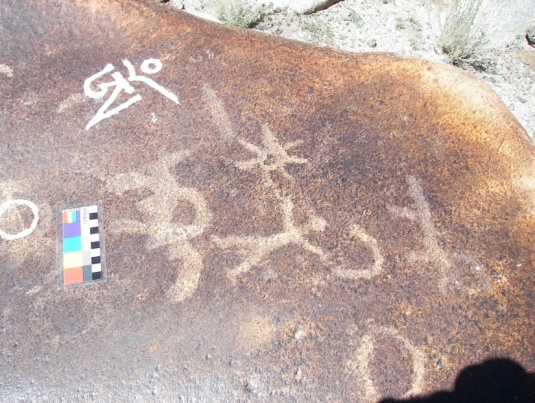
We believe that such stone carvings also record Supernova events that happened 5000 years ago. (Oldest Supernova and Skychart, Hrishikesh Joglekar, Aniket Sule and M N Vahia, Puratattva, 41, 207, 2011)

Stage 2: Settlement astronomy

In this phase, a culture should cross the following landmarks:
-
Large structures are created with astronomy in mind. Megaliths seem to have been used for forecasting seasons.
-
Various aspects of Moon (and planets?) get studied.
-
Constellations, Zodiacs, and Nakshatra, etc. are defined.
-
Eclipses are noticed and attempts are made to determine their periodicity.
-
Transient events such as comets are recorded.
-
New myths are created to explain these observations.
-
Cosmogonical ideas emerge.
Megaliths
Megaliths are large structures are created to study the sunrise patterns. Megaliths become essential for calendrical purposes. These megalithic structures are gigantic in size and are clearly made with great care and diligence. In western context, they have been shown to be for astronomical use. In India more than 2000 such structures have been catalogued but not studied.

In a paper in Current Science (CURRENT SCIENCE, VOL. 102, NO. 5, 10 MARCH 2012 683) we have studied the megalithic site Byse near Hosnagara in Karnataka and we show that there is a strong case for considering it to be an astronomically aligned site. We show that the major sightlines are aligned toward the solstice sunrises and sunsets. This is the first-ever direct evidence of a megalithic site in the Indian subcontinent with strong astronomical association. We also show that the design of this site is fundamentally different from astronomical megaliths in other parts of the world.

Cosmogonical ideas
At this stage, people start speculating on their place in the Universe. By far the most pronounced expression of the same is the Nasadiya Sukta in Rig Veda X, 129, written around~1500 BC.
-
At first was neither Non Being nor being. There was not air nor yet sky beyond.
What was its wrapping? Where? In whose protection? Was water there, unfathomable and deep?
-
There was no death then, nor yet deathlessness; of night or day there was not any sign.
The One breathed without breath, by its own impulse. Other then that was nothing else at all.
-
Darkness was there all wrapped around by darkness, and all was Water, indiscriminate.
Then, that which was hidden by the Void, That One, emerging Stirring, through power of Ardor, came to be.
-
In the beginning, Love arose, which was the primal germ cell of the mind.
The seers, searching in their hearts with wisdom, discovered the connection of Being with Non-being.
-
A crosswise line cut Being from Non-being, What was described above it, What below?
Bearers of seed there were and mighty forces, Thrust from below and forward, move above.
-
Who really knows? Who can presume to tell it? Whence was it born? Whence issued this creation?
Even the Gods came after its emergence. Then who can tell from whence it came to be?
-
That out of which creation has arisen, Whether it held it firm or it did not,
He who surveys it in the highest heaven, He surely knows – or maybe He does not!
Tribal astronomy
Mainstream Astronomy has been homogenised through cultural exchange. Hence on major issues like division of constellations etc. there is a uniformity between cultures. However, isolated groups like tribal are not party to this kind of homogenisation. They, therefore, continue to have their own interpretation of the sky. We have studied astronomical ideas of 10 tribes of Western and Central India and the Nicobar Islands. In the picture below we show how the same constellation of Pleiades appears different from different cultures.

In general, the astronomical imagery amongst the tribes can be divided into five categories.
-
daily timekeepers – Sun, Moon, morning and evening star;
-
calendrical – constellation rise time, seasons,
-
Expression of human activities – Leo, hen house and so on,
-
Mythological – Comets, Milky way, Shooting star, and
-
Cosmogonical – the Big Dipper. The level of complexity of the observation of the community is related to the settlement period of the culture.
Oral astronomical traditions, therefore, provide valuable insight into variations in the human perception of the sky that no monument can provide. The oral traditions are rich and can contain deep memories running into several thousand years. The skies have an additional advantage of being regular and periodic allowing for repeatable observations that can be correlated to seasons and other terrestrial events in a very reliable manner. Yet subtle differences produced by precession also provide an internal clock that allows backtracking to a much greater degree. Oral traditions, therefore, have significant value and the records seem less contaminated that would be assumed. They provide a rich and varied perception of humans about the stars and their interrelation.
We have not dealt with their myths of origin over here but they are also varied. While many land-based tribes have stories about being liberated from clutches of evil by their great gods (Gonds), some believe that the god took the dust from the earth and made them (Korku). Nicobar tribes believe that they once lived in a world where gods and humans lived on the earth together but when the sun became very hot, the humans had to use bow and arrow in a concerted manner and push the skies up into the heavens and the stars that we see in the sky are the arrows keeping the sky up.
Oral traditions, therefore, provide rich and varied data about human intellectual traditions that cannot be extracted by the study of residues of earlier cultures. They provide not only the data about the tribe alone, but also provide insights into human intellectual growth overall.
These are published in the following papers which are available on the internet.
-
Vahia M N, 2016a, Evolution of science I: Evolution of Mind, Current Science, 111, 1456 – 1464, 2016
-
Vahia M N, 2016b, Evolution of science II: Insights into working of Nature, Current Science, 111, 1465 – 1472, 2016
-
Vahia M N and Halkare, Ganesh, 2013, Aspects of Gond Astronomy, Journal of Astronomical History and Heritage, 16(1), 29-43
-
Vahia M N, Halkare Ganesh, Menon Kishore, and Calamur Harini, 2014, Astronomy of two Indian Tribes: The Banjaras and the Kolams, Journal of Astronomical History and Heritage, 17, 65
-
Vahia, M N, Halkare Ganesh, Dahedar P, 2016, Astronomy of the Korku tribe, Journal of Astronomical History and Heritage, 19, 216–232
-
Vahia M N, Ramachandran V S, Gangopadhyay Jayant, and Joseph Justin, 2017, Understanding Rationality, Culture and Scientific Temperament of Cholanaikkan Tribe of Kerala Heritage: Journal of Multidisciplinary Studies in Archaeology 5, 862‐882
-
Vahia MN, Yadav N, Ladiwala U, Mathur D, 2017, A diffusion-based study of population dynamics: Prehistoric migrations into South Asia. PLoS ONE 12(5): e0176985. https://doi.org/10.1371/journal.pone.0176985
-
Vahia M N and Halkare Ganesh, 2017, Astronomy of tribals of central India, Current Science, 113, 1041 – 1049
-
Vahia M N, Halkare Ganesh, Awaradi S A, and Menon K, 2018, In situ studies of astronomy of the Nicobarese Tribe of Nicobar Islands, to appear in Heritage: Journal of Multidisciplinary Studies in Archaeology
Even ancient punch marked coins have a lot of astronomical indicators.
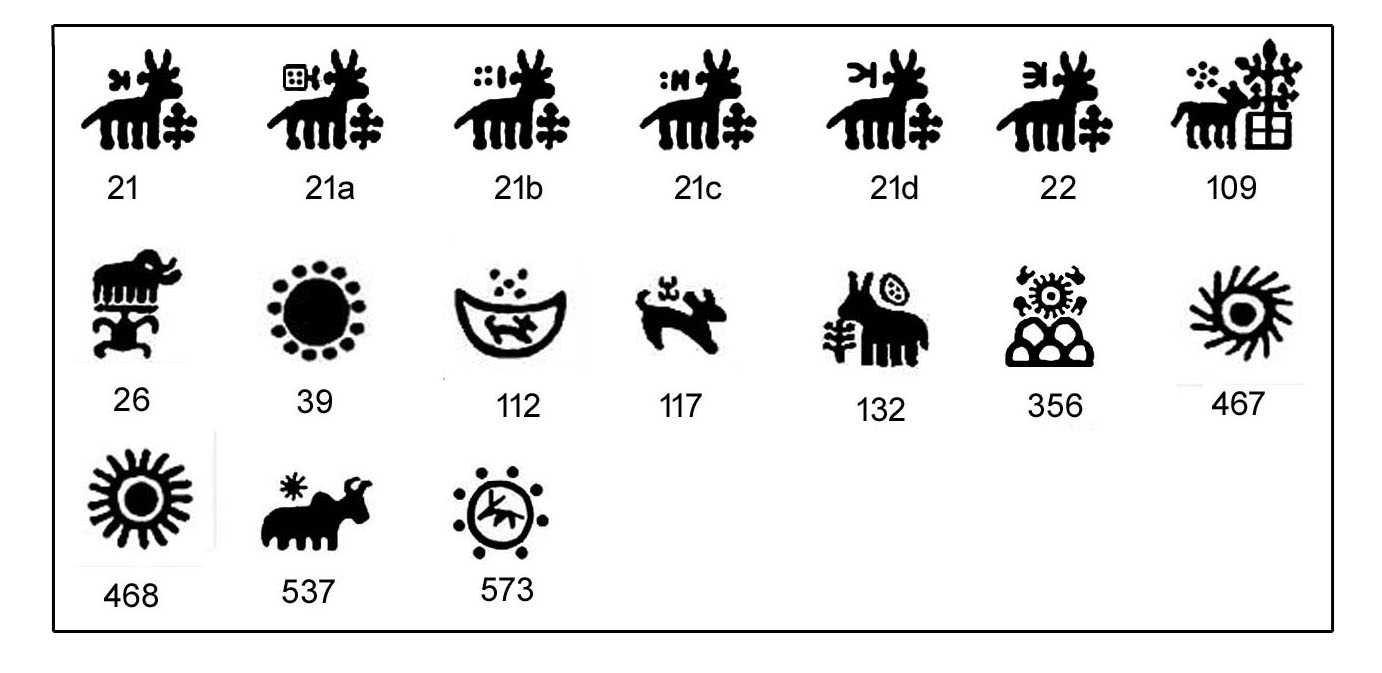
Stage 3: Astronomy of civilisation
At this stage, the society can support speculations on Astronomical mythology, Astrology, and Cosmogony. In the absence of other knowledge, such activities would have certain respectability. These include re-interpretation of old scattered ideas or the creation of new ideas. Sophisticated speculations emerge. An interesting mixture of religious beliefs, astronomy, and architecture emerge, reflecting the cosmogony of the period.
Some amount of mathematical astronomy also arises at this stage.
Observatory at Dholavira?
Dholavira is the largest Harappan Town in India. It is situated in one of the islands in the Little Rann of Kutch. During Harappan time, the Rann was filled with water and hence Dholavira was an important trading city with a port few kilometers away.
The city of Dholavira is on the Tropic of Cancer (latitude 23o 26’ 22”). The location of structure 1 is latitude 23o 53’ 14.0” N; 70o 12’ 44.5”. However, the earth’s axis of rotation fluctuates by about 0.5o over centuries (Vahia and Menon, 2011). Hence, we can assume that Dholavira lay exactly on the Tropic of Cancer. Hence the shadows of all the structures would be to the north of the structure except for the local solar noon of Summer Solstice when the Sun would come to the zenith and no shadows would be cast. This is clearly something a civilisation as complex as the Harappan civilisation must have noticed.
The Bailey structure of Dholavira is unusual in several ways. It is built on what seems to be an intentional incline that points to the celestial pole. It also has two circular structures, a rare structure for the rectangle- loving Harappans. However, from the workmanship and relation to the neighbouring structures, these structures seem to be contemporaneous to other structures in the Bailey. While structures of the Harappan civilisation do not have stone pathways leading to the entrance, these two buildings have such pathways. The whole city is inclined 6 degrees to the West of north, but the two circular structures in the Bailey have openings that are exactly to the north and west respectively. In addition, the west-facing structure has two walls that are so constructed that their shadow would just touch the entrance to the structure on winter and summer solstice days.
We have simulated the Bailey structures by making assumptions about the superstructure such as the height of the walls (2.5 meters) the flat roof. We have also assumed the presence of an aperture of a certain size (which is not crucial to the simulation) and its positioning. However, none of these parameters are at variance with what is known about Harappan architecture.
Using these assumptions we have simulated the movement of the image cast by a hole in the ceiling of the structures. The image clearly coincides with important points within the structure. Hence important days of solar calendar could easily be identified by analysing the image inside the room. The narrow beam of light from the entrances would also enhance the perception of the movement of the sun over the period of one year.
For details please see A possible astronomical observatory at Dholavira, M N Vahia and Srikumar Menon, Journal of Astronomical History and Heritage, 16, 261, 2013

Cosmogony of Upnishads
In Brihadaranyaka Upanishad (6th Brahmana) Yagnavalkya describes Universe to Gargi as :
-
Everything on earth is wrapped in water
-
Water is wrapped in air
-
Air is wrapped in sky
-
Sky is wrapped in the world of Gandharvas (planets?)
-
Worlds of Gandarvas is wrapped in Aditya (Sun)
-
The world of Sun is wrapped in the world of Chandra (Moon)
-
The world of Moon is wrapped in the world of Nakshatra
-
The world of Nakshatra is wrapped in the world of Deva’s
-
The world of Deva’s is enclosed in the world of Indra
-
The world of Indra is wrapped in the world of Prajapati
-
The world of Prajapati is wrapped in the world of Brahman
Temples
Temples arose in India around 500 BC in the time frame when Buddhism spread in India.
They originally arise as sepulchral memorials for Buddha.
They have specific orientation and entrance windows for sunlight.
Architecturally temples seem to be a natural extension of megaliths.
They are essentially a representation of cosmos in a microcosm.
They are in two basic styles:
Nagara style: The tower is beehive shaped.
Dravida: The tower consists of progressively smaller storeys of pavilions.


Both these temple styles have a special garbhagraha where the gods reside. Apart from being an image of the god, the orientation (and directionality of gods) is also decided in astronomical context.
Dating ancient documents
Records of astronomical events can be used to date ancient documents.
|
Document |
Date (BC) |
Comments |
Reference |
|
Brihat Samhita (Prob a memory of earlier event) |
5284 |
Rohin Shakata Bheda |
Mahajani, Vahia et al. |
|
Yajur Veda |
2350 |
Vernal Equinox in Kritika |
Vedang Jyotisha translated by T S K Sastry |
|
Yajur – Vedanga Jyotisha |
1370 |
Summer Solstice in Aslesha |
|
|
Period of Lagadha |
1340 |
Polar latitude of Sravishtha |
|
|
Mahabharata |
1200 |
Saptarshi Calendar |
Sule, Vahia et al. |
|
Parashara Samhita |
1100- 1300 |
Description of seasons and constellations |
Iyengar R N |
Specialisation
Beyond a certain level of sophistication, a culture begins to specialise tasks and not everyone will be required to be proficient in all aspects of life. This translates into specialised education programme that comes in a variety of forms. However, a common feature of most of these is the state patronage. Depending on the capability, development of astronomy will be driven by mathematical and technological developments. Interaction with neighbouring cultures can also spur the growth. From here on, the growth of astronomy follows the same growth plan as the rest of the society.
Siddhantic Astronomy
In the Indian context, this phase begins around 500 AD with the advent of Siddhantic Astronomy and great astronomers like Aryabhatta. Pre-occupation of Indian astronomers for the next millennium was the calculation of geocentric planetary orbits. They developed algorithms for solving mathematical equations. This included concepts of trigonometry and limiting value of functions – the first steps of differential calculus.
At this stage, the exact mathematical equations covering the movement of Sun, Moon and Planets are parameterised. Important functions like sine functions are tabulated. Eclipses are calculated based on angular movements of the Sun and the Moon per day and their relative vertical and horizontal displacements. Planetary locations are calculated and Astral Charts are created for astrological purposes.
Who can be an astronomer?
According to Brihad Samhita of Varahamihira (505 AD) an astronomer should be a man of great personal strength and should be able to do the following:
-
Time division of Yuga, year, solstice, seasons, month, fortnight, day, night, yama (90 min), mahurta (48 min), nadi (24 min), prana, truti and calculate their starting and ending times
-
Saura (planetary calendar including the retrograde motion of planets and their different speeds in the sky),
-
Savana (terrestrial calendar)
-
Understand and calculate solstices
-
Calculate times of eclipses
-
Sun’s Motion; daily and annual motion and revolution including concepts of difference in the length of day and night of a place (from Ujjain)
-
Understand Nakshatras and Zodiacs and show them in the sky
-
Teach this to a smart student
Note that the knowledge of astrology is not required.
Astronomy of today
This path leads to Astronomy as we understand it today. Following stages appear here:
-
Invention of telescope and other instrumentation
-
Realisation of multi wavelength astronomy
-
Advances in physics and other fields
-
Satellite astronomy
Together they produce the comprehension of the cosmos that we call Astronomy and Astrophysics today.
Mapping to time periods
Our astronomical ideas become more sophisticated with the settlement period.

Astronomy allows us to define the four major phases of intellectual growth as:
-
Initial steps: 50,000 BC to about 5,000 BC (7,000 YBP)
-
Settlement Astronomy: 5,000 to 2,500 BC for Harappans and up to 1,500 BC or later for Vedic and other cultures in the Subcontinent.
-
Astronomy of civilisation: 2,500 to 1,900 BC for Indus Civilisation and 1,500 BC to 500 AD – Upanishad/ Purana period.
-
Technology based, state supported astronomy: 500 AD Aryabhata onwards
Summary
It is possible to create a map of the intellectual growth of a culture using astronomy as a probe. The growth of astronomy occurs in distinct stages that are dramatically different from each other. These stages can be considered analogous to phase transitions of the evolution of cultures. Often the archaeological evidence does not show these dramatic transitions. Astronomy therefore provides an excellent window to the past.
Some references
-
Possible errors in historical dates: Error in correction from Julian to Gregorian calendars Mohan Apte, Parag Mahajani, M N Vahia, Current Science, 84, 21, 2003
-
Dating of Rohini Shakat Bhed, Parag Mahajani, M N Vahia, Mohan Apte and A P Jamkhedkar, Annals of Bhandarkar Institute,(2006) vol 87, p 135 – 151, 2007.
-
Calculations of tithis: an extension of Surya Sidhanta formulation, Sudha Bhujle and M N Vahia, Indian Journal of History of Science, 41 no 2, 133, 2006
-
Saptarshi’s visit to different Nakshatras: Subtle effect of Earth’s precession, Aniket Sule, M N Vahia, H. Joglekar, Sudha Bhujle, Indian Journal of History of Science, 2007, 42.2, 133 – 147
-
In search of Indian records of Supernovae, Hrishikesh Joglekar, Aniket Sule and M N Vahia, Indian Journal of History of Science, 42.1, 83 – 93, 2007
-
Possible period of the design of Nakshatras, Sudha Bhujle and M N Vahia, Indian Journal of History of Science, December 2006
-
Indian prehistory: assimilation of archaeological, archaeo astronomical, genealogical, genetic and linguistic data., M N Vahia, Presented at the 1st SOSAA Conference, to appear in Asian Archaeology, 2007
-
Archaeo Astronomy in Indian Context, M N Vahia and Nisha Yadav Proceedings of the 6th International Conference on Oriental Astronomy, p 61 Astronomical History and Heritage ed. W Orchiston, T Nakamura and Richard Storm, Springer
-
Investigating Megalithic Astronomy: the role of remote sensing Srikumar M. Menon, Mayank N. Vahia Presented at the 3rd International Conference on Remote Sensing in Archaeology, 17th - 21st August 2009, Tiruchirappalli, Tamil Nadu, India
-
The prehistoric meteor shower recorded on a Palaeolithic Rock Naseet Iqbal, M N Vahia, Ajaz Ahmed, Tabasum Masood NRIAG Journal of Astronomy and Astrophysics (Egypt), Special Issue, PP. 469–475 , (2008)
-
Some Earliest Ancient Astronomical sites in Kashmir (India), Naseer Iqbal, M N Vahia, Tabasum Masood and Aijaz Ahmad Journal of History of Astronomical History and Heritage, 12, 61, 2009
-
Investigating Megalithic Astronomy: the role of remote sensing, Srikumar M. Menon, Mayank N. Vahia, Space, Time and Place, (proceedings of the 3rd International Conference on Remote Sensing in Archaeology, 17th - 21st August 2009, Tiruchirappalli, Tamil Nadu, India), ed Campana S, Forte M and Liuzza C, BAR International Series, 2118, p 333, 2010.
-
Cultural Complexity of Indus Valley Civilisation, M N Vahia and Nisha Yadav, Journal of Social Evolution and History, 10, 67-86. 2011
-
Stone Alignments with Solar and Lunar Sightlines in Bandipur and Aaraga Gate India.; Srikumar Menon, M N Vahia and Kailash Rao; Man and Environment, 36, 92-95, 2011
-
Indian Record for Keplers Supernova: Evidence from Kashmir Valley; Sule A, Bandey A, Vahia M N and Iqbal N; Astron. Nachr. 332, No. 6, 655 – 657, 2011
-
Megalithic Astronomy in South India, Srikumar Menon and M N Vahia, Mapping the Oriental Sky: Proceedings of the 7th International Conference on Oriental Astronomy, Japan, September 2010, ed. T Nakamura, W Orchiston, Mitsuru Soma and Richard Storm, National Astronomical Observatory, Japan, p21-27, 2011
-
Oldest Supernova and Skychart; Hrishikesh Joglekar, Aniket Sule and M N Vahia; Puratattva, 41, 207, 2011
-
Classification of patterns in Indus objects; Nisha Yadav and M N Vahia; International Journal on Dravidian Linguistics, 40 (2), 89 – 114, , 2011
-
Study of impact material of Akhnoor Meteor crater in J & K (India); Naseer Iqbal, Ajaz Ahmed, Tabassum Masood and M N Vahia; Natural Science a Journal of the SCIRP group, Vol.3, No.6, 426-429, 2011
-
Megalithic astronomy in the Indian subcontinent; Srikumar Menon, M N Vahia and Kailash Rao M; To appear in a book edited By Rabi Mohanty, Deccan College, 2010
-
Indian Record for Kepler’s Supernova: Evidence from Kashmir Valley, Sule A, Bandey A, Vahia M N and Iqbal N, Astron. Nachr. 332, No. 6, 655 – 657, 2011
-
Oldest Supernova and Skychart, Hrishikesh Joglekar, Aniket Sule and M N Vahia, Puratattva, 41, 207, 2011
-
Astronomical myths of India; M N Vahia; Stars of Asia,2011, ed. N Kaifu, Japan
-
Stone alignments with solar and other sightlines in Byse and Nilaskal South India.; Srikumar Menon, M N Vahia and Kailash Rao; Current Science, 102(5), 683 – 684, 2012
-
Aspects of Gond Astronomy, M N Vahia and Ganesh Halkare Journal of Astronomical History and Heritage, 16(1), 29-43, 2013
-
Ancient eclipses and long-term drifts in the Earth–Moon system, M. N. Vahia, Saurabh Singh, Amit Seta and B. V. Subbarayappa, Current Science, 105, NO. 1, 61-71, 2013
-
A possible astronomical observatory at Dholavira, M N Vahia and Srikumar Menon, submitted to Journal of Astronomical History and Heritage, 16, 261, 2013
-
Exploring the Structure of Indus Script Using Computational Methods, Nisha Yadav and M N Vahia, Heritage: Journal of Multidisciplinary Studies in Archaeology 1, 210, 2013
-
Heavenly Discourse in Stone, M N Vahia, Proceedings of the International Conference on Heavenly Discourses, Edinburg, 2011, To appear in the proceedings, December 2013.
-
The Astronomical Significance of the Megalithic Sites at Nilaskal and Byse, Menon, S. M., Vahia, M. N. and Rao, K., In Dikshit, K. N. and Kumar, A. (Eds.) The Megalithic Culture of South India (Special Report No. 6). Indian Archaeological Society, New Delhi, 33-44, 2014.
-
Survey of Stone Circles at Junapani, Abbas, R., Vahia, M. N. and Sule, A., In Dikshit, K. N. and Kumar, A. (Eds.) The Megalithic Culture of South India (Special Report No. 6). Indian Archaeological Society, New Delhi, 262-270, 2014.
-
Astronomy of two Indian Tribes: The Banjaras and the Kolams, , M N Vahia, Ganesh Halkare, Kishore Menon and Harini Calamur Journal of Astronomical History and Heritage, 17, 65, 2014
-
Astronomy of three Indian Tribes, M N Vahia, In SHI, Yun-Li (eds.), 2014. Astronomical Heritages in Asia-Pacific Areas. Proceedings of the Eighth International Conference on Oriental Astronomy. Hefei, University of Science and Technology of China.
-
Eclipse records in India and rotation of the earth, M N Vahia, Saurabh Singh and B V Subbarayappa, In SHI, Yun-Li (eds.), 2014. Astronomical Heritages in Asia-Pacific Areas. Proceedings of the Eighth International Conference on Oriental Astronomy. Hefei, University of Science and Technology of China.
-
Myths of Eclipses in different civilisations, M N Vahia, Special Meeting on Eclipse Records in Asia, NAO, Japan, November 2014.
-
Megalithic Burials at Junapani: A Report Riza Abbas and Mayank Vahia, Submitted to Indian Council for Historical Research, 2013
-
Developments in Astronomy in India, M N Vahia, To appear in the commemorative volume of Indian Science Congress, February 2014.
-
The Astronomical Significance of the Megalithic Sites at Nilaskal and Byse, Srikumar M. Menon, Mayank N. Vahia and Kailash Rao M., To appear in a special volume on Megalithic cultures of South India, ed. K N Dixit and Ajay Kumar, Indian Archaeological Society, 2014
-
Origin and Growth of Astronomy in India, to be published by National Council of Science Museums, 2015
-
Stone Circles of Junapani, Submitted to Indian Council for Historical Research, December 2014.
-
Dating the past: Archaeoastronomy and modern science Mayank Vahia, Physics News, 45, 23, 2015
-
India, the Andaman Island and the Orang Asli of Southeast Asia: An astronomical perspective, Mayank Vahia and Wayne Orchiston, Presented at the South East Asian Astronomy Association meeting, November 2015, to appear in Journal of Astronomical History and Heritage, 2016
-
Southeast Asian Astronomy at the Cross-roads: Historical Links with India, Mayank Vahia, Presented at the South East Asian Astronomy Association meeting, November 2015, to appear in Journal of Astronomical History and Heritage, 2016
-
Identification of junction stars of Nakshatra from precession calculation, Upasana Niogi and M N Vahia, Submitted to IJHS, October 2015
-
Evolution of science I: Evolution of Mind, Mayank N Vahia, to appear in Current Science, December 2015.
-
Evolution of science II: Insights into working of Nature, Mayank N Vahia, , to appear in Current Science, December 2015.
Author details: Mayank Vahia, Dean, School of Mathematical Sciences, Narsee Monjee Institute of Management Studies, Mumbai, Email: mnvahia@gmail.com
